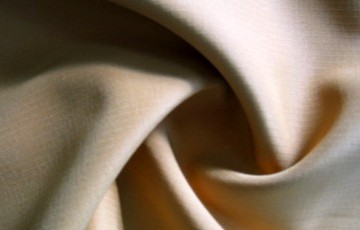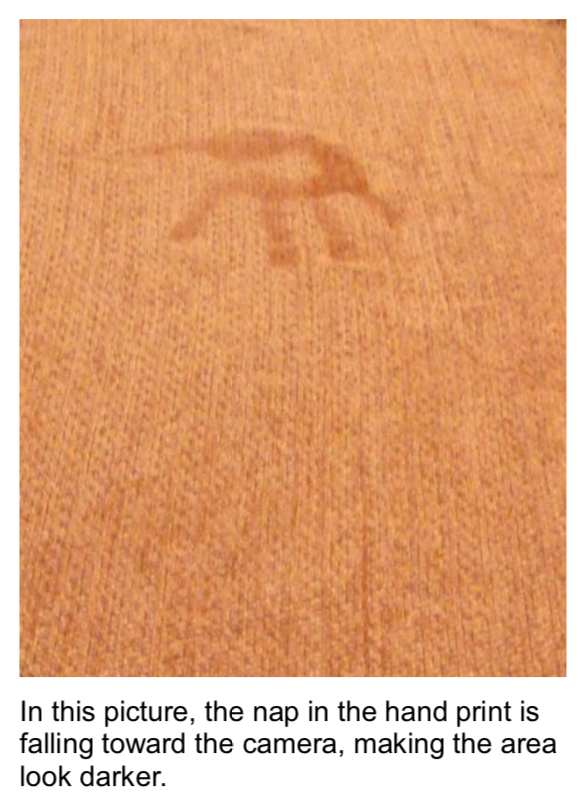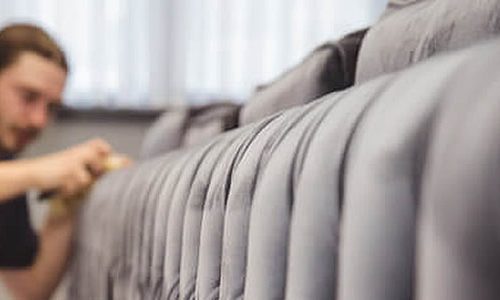
Pros and Cons of Rayon Upholstery
Do you own rayon upholstery, floor covering and drapery? Fine Fabric Care of Columbus is your cleaning resource.
Here are a few things you might like to know about rayon.
Rayon History & Resurgence!
Rayon was the first manufactured fiber and variations of it have been marketed since the mid 1800’s. It wasn’t officially named rayon until 1924. It is the oldest production fiber and for many years was out of favor with manufactures because so many other new fibers were being invented. However, over the past few years, textile producers have been using much more rayon in both clothing and home furnishing fabrics.
Rayon Goes By Many Different Names
Sometimes rayon is hard for consumers to recognize because it has many names – Bemberg, Viscose, Cuprammonium and Art Silk, just to name a few.
Many textile manufacturers choose rayon because it can mimic silk at a much lower cost and dyes easily. Rayon can add interest and highlights to blended fibers and can be woven into pile constructions like velvet and chenille, which are very fashionable.
How Rayon Is Made
Unlike natural fibers such as cotton and linen, rayon is created by gathering wood pulp, bamboo, cotton trash or other natural fiber by-products, adding chemicals to break them down, and then forcing the mixture through spinnerets to create a lustrous fiber that is neither a true synthetic nor a natural fiber. Rayon is a semi-synthetic or artificial fiber known as a man-made cellulosic fiber.
The Natural Shading Of Rayon
Because rayon is now being used so frequently to make velvets, chenilles and pile floor coverings, we hope to help you understand rayon and what to expect when it is used as an upholstery fabric on sofas, chairs, area rugs and carpet.
While rayon has many good qualities, resiliency is not one of them. Resiliency is the ability of a fiber to recover from crushing, which happens with sitting or walking. Rayon does not recover from these activities as well as some other fibers.

Because it does not have the ability to recover from crushing, the tips of the rayon start to lie over as the furnishing or floor covering is used. This bending of the fiber creates what is referred to as shading.
If the fibers are oriented away from your line o sight, the area will appear to have lightened. Conversely if the fibers are pointing towards you, the area will appear darker. With continued use, the shading becomes more noticeable. This type of shading generally does not distract from the overall beauty of the furnishing or floor covering. In fact, shading is a natural occurrence in all pile fibers. Interior designers often choose fabrics that can change their look to create interest in a room.
When Shading Becomes Distortion
It is important to include one very important fact about Rayon chenilles, velvets and floor coverings – liquid spills and water-based cleaners can be harmful to their beautiful nap. When rayon pile fabrics and floor coverings are subjected to moisture, the fibers can start to lay flat and not “bounce back” because rayon lacks resiliency.
Water-based spills, damp cloths and even perspiration with a little pressure can cause unsightly nap distortion.
Some Helpful Hints on Living with Napped Rayon
First, understand that shading and nap distortion are going to happen…they are characteristics of any velvet, chenille or pile floor covering no matter what the fiber, but because of the luster of rayon, the shading is much more noticeable.
Brushing the nap with a velvet brush can help maintain the beautiful appearance of chenille or velvet furnishings.

Vacuuming rayon floor coverings without a beater bar can be helpful, too. In some cases a velvet brush could also be used on floor coverings.
Groom the nap when necessary and before it becomes too unsightly. In some cases it may take a professional to groom the more difficult nap distortion problems that occur from spots and spills, or when moisture and pressure are introduced.
Unfortunately if the matting is too severe even a professional may not be able to correct the matting problem.
When a spill occurs, try to absorb the spot with a paper towel…do not use pressure as it will mat the nap and make it more difficult to correct.
However, if it is a spill with dye such as Kool-Aid, tea, or coffee it may be better to use pressure to blot the liquid/dye into the paper towel and worry about nap distortion later.
What Effect Will A Fabric Protection Have On Shading And Nap Distortion?
While a fabric protection will make it easier to remove spots and spills, it does nothing to change the poor resiliency of rayon.
In fact independent laboratory tests showed that Fiber-Seal Brand Protectors neither helped, nor aided in shading or nap distortion.
Need Help With Fabric
Cleaning Or Fabric
Protection?
Your local Fiber-Seal Service
Center is ready to help and just
a click away.


